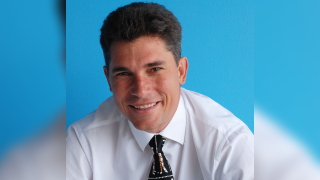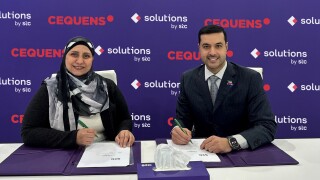
Locations like the UAE and Oman are gaining traction as centrepieces of the surrounding area’s rise as a digital corridor between regions. Kamel Al-Tawil, managing director for the Middle East and North Africa (MENA) at Equinix, explains how his company is creating the fabric to help propel this change.
What are your thoughts on the trends we’re seeing in digital traffic in the Middle East and North Africa [MENA] region?
The region has historically had a high reliance on European destinations for digital traffic exchange. However, things have been changing with the increased consumption of digital “everything” both during and pre-Covid, and because many Middle Eastern digital programmes have been sponsored at government level. In the UAE, there are digital initiatives in Dubai and Abu Dhabi, while Saudi Vision 2030 is trying to transform Saudi Arabia into a digital hub.
We’re also seeing activities around Oman becoming a key interconnectivity point for the region. We are playing a key role there with our newly established IBX [International Business Exchange] MC1 data centre in the capital, Muscat, since October 2020, which is driving a lot of traffic in the region.
By moving content from remote locations in Europe to local carrier-neutral data centres like those of Equinix in Dubai and Oman, it will help service providers to reduce the cost of “tromboning” data across regions, while improving performance and lowering latency.
How has digital consumption in the region been affected by the pandemic?
It’s no secret that Covid has accelerated consumption of digital services globally, and the Middle East is not in isolation of that. Things like work-from-anywhere have increased this consumption, though Covid drove what was already imminent.
Digital transformation is not just about business, but also improving lives and the planet if you look at areas such as sustainability and CO2 emissions. For us at Equinix, sustainability is key and we try to work not just on making our data centres green and efficient, but also on relying less on travel.
How important is it to have hubs in the Middle East to support the explosion of digital traffic?
This is key at a time when we see the increasing emergence of so-called digital corridors, which are becoming more and more important in the way traffic is travelling across regions.
One of these is within the MENA region, which is at the centre of connecting three continents – Europe, Asia and Africa. We believe that MENA can therefore be a centrepiece, with regions such as Africa becoming more important on the global digital map as a continent with a huge population eager to consume services. In line with this, Equinix recently announced its expansion into Africa through the acquisition of MainOne.
The cornerstones of these digital corridors are carrier-neutral data centres, as interconnectivity hubs that enable data to be exchanged between ecosystems. We have three data centres in the UAE – two in Dubai and one in Abu Dhabi – and our DX1 carrier-neutral facility in Dubai, for instance, houses more than 60 network service providers, in addition to hyperscalers, over-the-top players and content delivery networks.
At the same time, we’re seeing the evolution of Muscat as a vibrant digital ecosystem that’s becoming a gateway between Europe, Asia and Africa.
What trends are you seeing in your data centres in the UAE and Oman?
We’ve seen a surge in hyperscaler and cloud service provider demand, so we are working with them to accelerate their entry. We are also seeing an accelerated adoption of digital transformation among key enterprises in the Middle East, including both multinationals that want to come to the region and local enterprises.
In addition, we’ve seen a huge uptake in customers adopting hybrid multi-cloud technologies because there is no one-cloud-fits-all model. In October 2020, we launched our Equinix Fabric platform in the region, which is a software-defined platform that allows customers to build highly scalable, secure hybrid cloud infrastructure.
How do you see the MENA region growing in future in terms of digital traffic and submarine cables?
We’re seeing an increase in adoption of services fuelled by many government programmes and consumers becoming more digitally savvy. We’ve also seen big players bringing submarine cables to the region or in the process of builds, such as the Oman Australia Cable, Blue-Raman, the India-Europe-Xpress and 2Africa.
However, there are areas that can still be improved, such as ease of access to capacity, openness of access, and cost of access. This means a joint effort between regulators, operators and ourselves as neutral players on how we can cooperate to build that ecosystem.
The more we can decrease reliance on Europe for traffic and make it localised, affordable and open, the more it will really create the digital ecosystem we’re all looking for. This is where our focus is – to provide a carrier-neutral platform, interconnectivity and digital hubs to bring traffic to the region and impact on economies.








